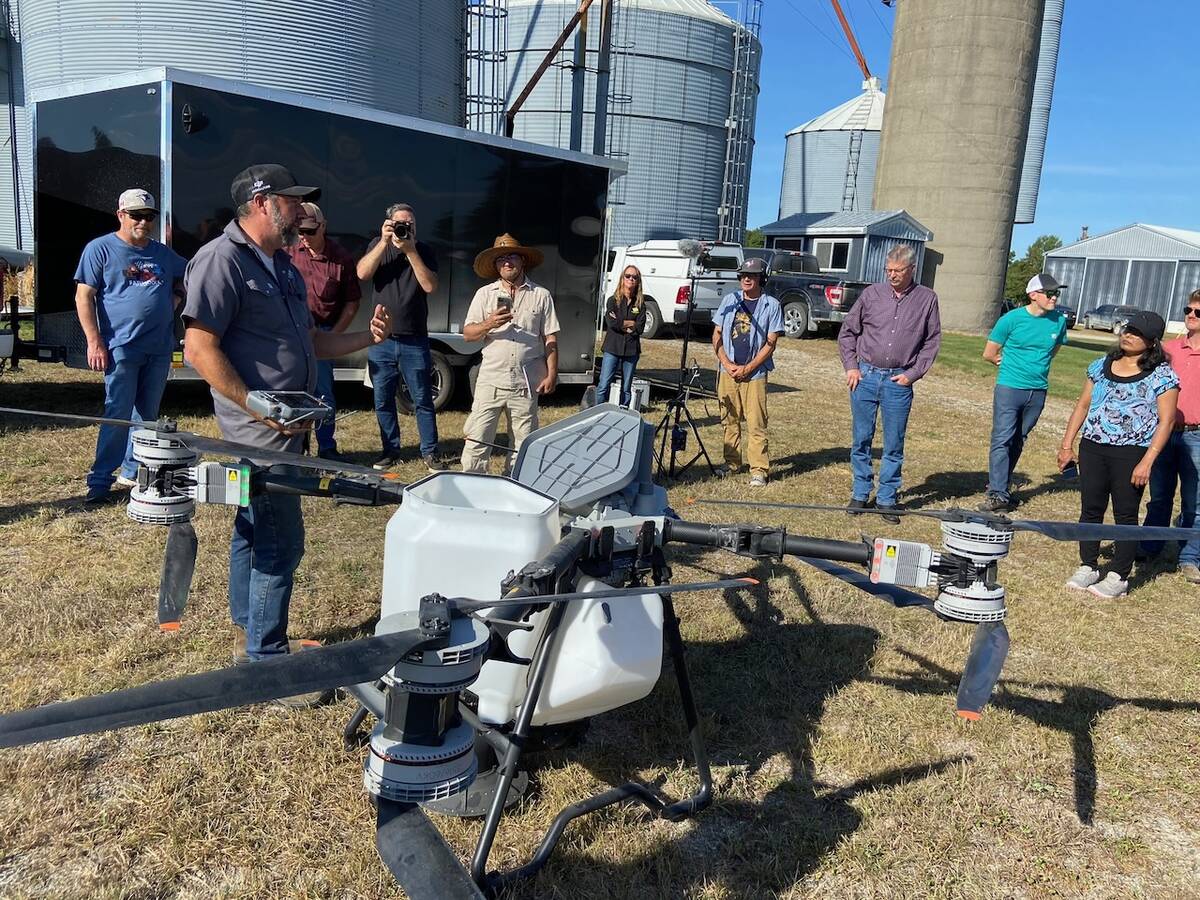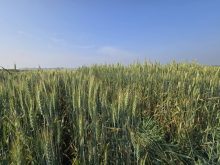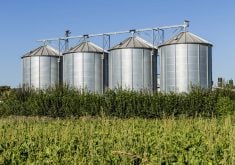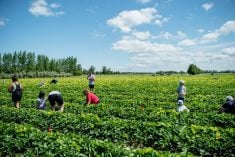The sclerotinia risk was high in most of Manitoba last week, but it may have changed this week and the risk could be different a week from now, says Manitoba Agriculture, Food and Rural Development (MAFRD) oilseed specialist Anastasia Kubinec.
That’s why it pays farmers to assess the risk to their own canola crops before making the decision to apply a fungicide.
Even if apothecia — the tiny mushroom-like bodies that emit sclerotinia spores — are present and the weather conducive — warm and humid — it might not pay to spray if it’s a poor crop, or a good crop that is more than 50 per cent flowered.
Read Also

Drones jumpstart cover crop planting
Drones are a tool that can help farmers with cover crop planting in still-growing corn and soybeans.
If there’s little yield potential, there’s no point in spraying. And if it’s more than 50 per cent flowered it’s too late for the fungicide to protect the crop, Kubinec said during the Crop Talk – Westman webinar July 9 hosted by MAFRD’s Souris-based farm production specialist Lionel Kaskiw. The optimum time to apply a fungicide varies between fungicides. Some should be applied at 20 to 30 per cent bloom. Check the label for the correct timing.
Earlier is also better if the sclerotinia risk is high.
A lot of Manitoba’s canola is late this year because of delayed seeding. Much of it is also under stress due to excessive moisture. Stress can cause canola to bolt and flower prematurely, Kubinec said.
When sclerotinia is present in a canola field, it will thrive under warm, humid conditions. But it won’t when it’s hot and dry.
Apothecia can show up in fields until the end of August. Scout for them in the morning, because they can dry out and disappear later in the day, Kubinec said. Look for apothecia in last year’s canola fields.

A thick canola crop with a closed canopy can create a humid microclimate ideal for the disease. Walk the field at 10 a.m. and if you get wet, conditions are right for the disease.
To assist farmers MAFRD has a downloadable, spreadsheet-based Sclerotinia Treatment Decision Tool on its website.
Farmers can plug in information about their field and sclerotinia history, crop density, whether there has been rain recently and the expected weather. Canola prices and spraying costs are also part of the equation.
Determining the stage of a canola flowering can be a challenge because plants are not all at the same stage. The Ontario Canola Growers Association has pictures on its website to help producers identify canola stages.
The site recommends the following steps when determining a canola crop’s bloom stage:
- Find the main stem.
- Pull off the secondary branches.
- Count only the open flowers on the main stem including aborted flowers and newly formed pods.
- Sample several plants across the field.
Ten per cent bloom is when there are 10 open flowers on the main stem.
Twenty per cent bloom is when there are 14 to 16 open flowers, aborted flowers and developing pods on the main stem.
Thirty per cent bloom is when there are 20 open flowers, aborted flowers and developing pods on the main stem.
After 30 per cent bloom is when petals start to drop and pod set starts.
The falling petals, some of which get caught between stems and branches, provide the material for sclerotinia to grow on and then spread.
Fields at 50 per cent flower are at their brightest-yellow colour.
“Keep in mind what the majority of the field looks like,” Kubinec said. “Look at a few spots in the field not just the best part of the field. Don’t just look at the headland or just the top of the hill because… they may be just a little bit more advanced.”
In fields where the crop stand varies a lot, farmers should make their spraying assessment based on the areas that have the most yield potential, she said.
According to research at this time of year a crop that averages five plants per square foot still has full yield potential, Kubinec said. Then it’s a matter of assessing the risk to the crop. A thin crop is unlikely to have a thick canopy, but if it’s moist and humid the crop could still be susceptible.
“If your canopy is still wet in the middle of the day even though you’ve only got five plants (per square foot) you’d still consider it high risk,” Kubinec said. “If it’s thinner and the whole field is thin you might think it is lower risk. But if you think there is potential for branching to occur you may still want to be spraying it.
“We do have the potential to see canola flowering for six weeks. We saw that in 2009 and 2010.”
















